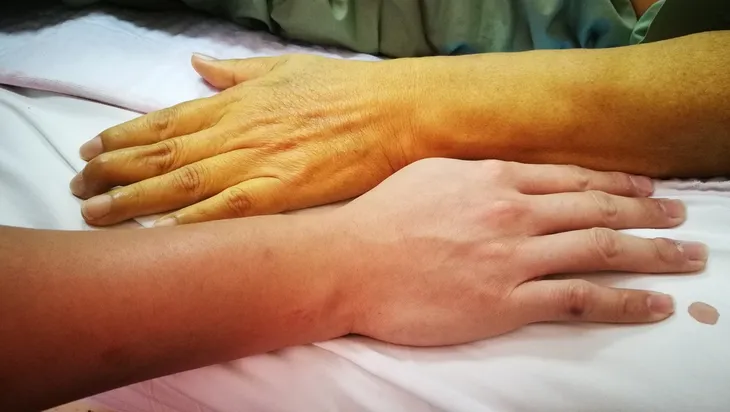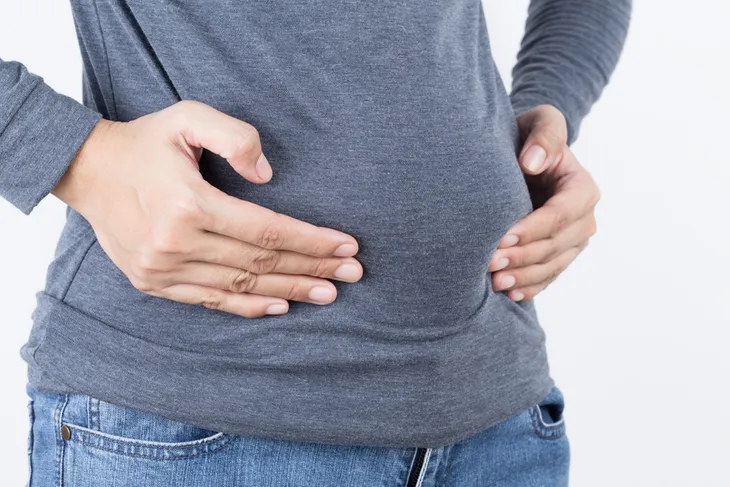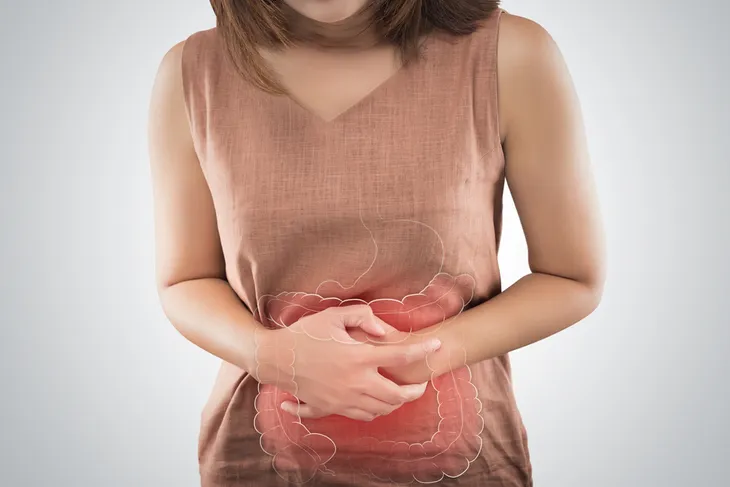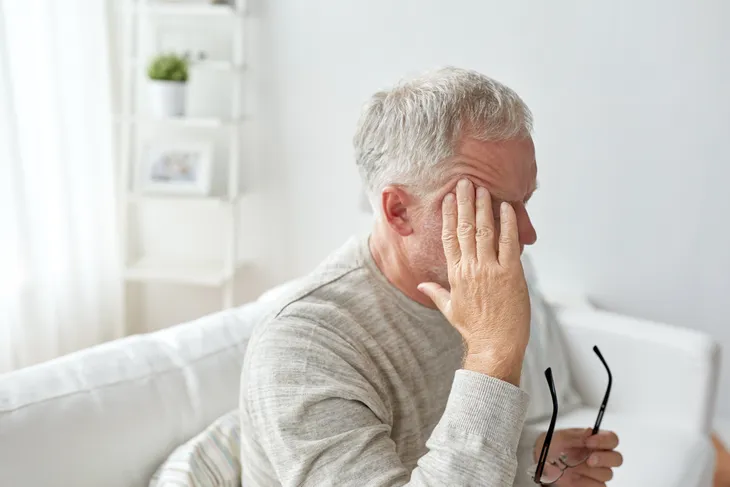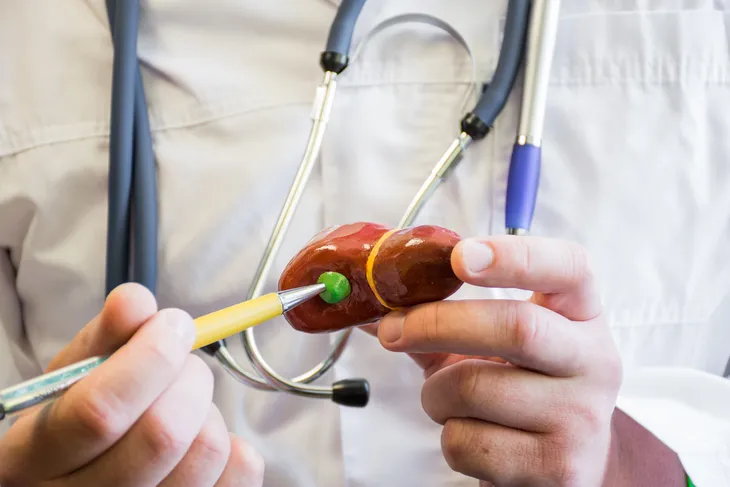Gallbladder attacks are downright scary! Often mistaken for a heart attack, when the gallbladder is unhealthy, this small digestive organ is unable to properly aid the digestive process (by storing liver bile and excreting it into the small intestine for food digestion). As a result, gallstones can form and block bile ducts, bile can back up into the gallbladder and cause painful inflammation, or the gallbladder can become infected with a condition known as cholecystitis.
A gallbladder attack can come on suddenly and last anywhere between a few minutes to a few hours, requiring hospitalization. That’s why staying calm and recognizing the signs can be important to your health and ability to sustain an attack.
Let’s take a look at the 16 warning signs and symptoms of a gallbladder attack…
Think you may have a gallbladder problem? Try Dr. Berg’s Gallbladder Cleanse – an Amazon 4.5+ star bestseller with over 1,150 consumer ratings. (As an Amazon associate, this site earns from qualifying purchases).
1. Belly Pain
The gallbladder is a little sac, or storage compartment, for bile, which is produced by the liver. The gallbladder emits bile into the small intestines via a duct referred to as the cystic duct. The entire process is meant to break down foods (namely fatty foods). You wouldn’t normally pay too much attention to your gallbladder, unless bile flow slows or becomes blocked, which can be very painful.
One of the most common and evident symptoms of gallstones is pain that begins in the upper right portion of the stomach, under the ribs. This belly pain will radiate outwards, moving gradually to the center of the belly or upper back. Gallstone attacks accompanied by pain of this nature usually last 15 minutes, but many patients report continuing or lingering pain can go on for hours and even rouse you from sleep.
2. Indigestion
Complaints of gas, nausea, and abdominal discomfort after meals are the most common symptoms, but they may be vague and difficult to distinguish from similar complaints in people who do not have gallbladder disease. It makes perfect sense that the gallbladder would affect digestion when you consider that it’s such an important part of the digestive process, which enables fat-absorbable nutrients (i.e., vitamins A, D, E, and K) and emulsified fat to pass through the intestinal lining and enter the bloodstream.
When this occurs, the patient may experience symptoms of biliary pain or colic, which causes a steady gripping pain (i.e., like heartburn) in the upper right abdomen near the rib cage. Also, akin to heartburn, colic can radiate to the upper back and behind the breast bone causing pain, pressure, and discomfort.
3. Vomiting
Gallstone pain can cause extreme nausea and vomiting, particularly following meals. This may help relieve some of the gas pressure and stomach pain. However, it can be accompanied by a fever and extreme nausea leading up to the point of actually vomiting. This pain is known as biliary pain or colic and can last from one to several hours following a meal.
Biliary colic can occur with sleeping position, during the night when sleeping, or at the same time every day, but it’s typically spurred by consuming a large or fatty meal. We’ve already established that the gallbladder plays an important role in digestion (particularly of fats), which explains why it can strike soon after a large or rich meal.
4. Lack of Appetite
Loss of appetite will occur gradually as gallstone pain worsens. If nausea occurs mainly following meals, the patient may avoid eating altogether due to fear of pain and discomfort. As inflammation or infection of the gallbladder worsens, a gallstone can completely block bile ducts and make digestion very painful.
Gallbladder pain often occurs when bile ducts are blocked. When this occurs, bile (a liquid made up of waste called bilirubin) is forced to build up in the liver, commonly in people with weakened immune systems. If your appetite is lacking due to nausea and indigestion, you should talk to your doctor. A simple blood test can indicate increased bilirubin, liver enzymes and alkaline phosphate levels, which all point to a blockage.
5. Jaundice
Again, if a gallstone becomes lodged in or blocks a bile duct, the substance will remain in your body and bloodstream, turning your skin and the whites of the eyes a yellowish hue (known as jaundice). As mentioned, bile ( a combination of waste products, including bilirubin, cholesterol, and bile salts) is emitted by the liver in order to break down food for digestion after meals.
However, bile might not be released into the small intestine to aid digestion if a gallstone has developed. When bile ducts become blocked, bile has nowhere to go so it remains and accumulates in the liver. The buildup of bile will lead to increased levels of bilirubin (waste product) in the blood, and jaundice (or a yellowing of the skin) will occur.
6. Urine Changes
Gallstones are small stones that are made up of a mixture of cholesterol, bile pigment, and calcium salts. If they form in the gallbladder, the bile pigment can cause urine to turn a dark brown or yellow. However, some patients develop urine that’s deep brown or even maroon in color versus the healthy shade of straw to yellow color, which signifies a hydrated system.
When there is an excess of waste products in the body, in the case of gallstones, it may indicate that a bile duct is blocked. This results in too much potentially dangerous waste products circulating in the body. Dark or discolored urine can indicate gallbladder issues as well as dehydration. However, blood tinged urine usually indicates kidney damage.
7. Diarrhea
Explosive and frequent bowel movements (up to 4 times daily) can occur with gallstone attacks, accompanied by pain that tends to come and go. Also, pain with these conditions may be felt all over the belly, rather than in one spot. For instance, you could experience radiating pain in the abdomen, breast bone (like heartburn), and lower back due to a gallstone attack.
Also, bowel movements may become light or chalky in color. Your stool may also be lighter in weight and float or the stools may be loose. Diarrhea is also a common result of insufficient bile (which can indicate a blockage). If your bowel movements are too frequent (10 times per day is high), talk to your doctor and get checked for gallstones.
8. Stool Changes
When gallstones—a painful mixture of bile, cholesterol, and hardened bilirubin—grow in size and block bile ducts, which normally help push bile into the intestines for elimination, the color of the stool can become pale or clay-like in color. When bowel movements become explosive, loose, float, or become very frequent (up to 10 times per day) this indicates an issue and could characterize a gallstone attack.
With a bile duct blockage (due to gallstones) bowel movements will typically take on a light or chalky color. Stool consistency may also be lighter in weight and loose. Diarrhea is also common and can result in dehydration if lost fluid is not replenished.
9. Fever
If a patient with gallstones or prone to gallbladder attacks experiences fever and chills, this typically indicates an infection of the bile duct. According to researchers at the University of Maryland Medical Center, roughly one-third of gallstone sufferers experience fever and chills.
However, keep in mind that fever will not result from typical biliary colic (or a bile duct blockage). More serious fevers will occur with acute cholecystitis, which may be by nausea and vomiting. Patients who experience this grouping of symptoms should seek medical attention immediately. Acute cholecystitis(or gallbladder inflammation) is a life-threatening condition that can cause gangrene or perforation of the gallbladder if left untreated.
10. Chest Pain
Oftentimes, a gallbladder attack is mistaken for a heart attack. This occurs if a blockage or infection afflicts the gallbladder or bile duct, as the acid is trapped in the stomach and gets pushed up into the chest, resulting in heart attack-like pain. Even though chest pain can indicate a heart attack, following a big or rich meal, your chest pain may be more indicative of a gallbladder attack.
Heartburn is a common symptom of gallbladder issues if it occurs after eating, while lying down (particularly after eating), or bending over, which puts pressure on the abdomen and chest. Heartburn due to gallbladder disease typically is a burning sensation in your chest that radiates upward to the upper abdomen and neck.
11. Pain Between Shoulder Blades
One of the most common symptoms of a gallbladder attack is pain. This pain typically occurs in the abdomen or the chest, as mentioned earlier, but can radiate outward, oftentimes toward the upper back between the shoulder blades.
It tends to affect the right shoulder blade, particularly, and can also spread into the shoulder area. This is because, while the gallbladder itself cannot experience pain, the nerves in this organ also extend to the muscles in the back—specifically, the area surrounding the right shoulder blade.
12. Feeling Abnormally Full
The gallbladder plays a crucial role in the digestive process, so when it’s not working properly—often because the bile ducts are blocked by gallstones—food doesn’t move through the body as it should. This may leave you feeling abnormally full for an extended period of time, even after consuming a small meal.
13. Feeling Bloated
Since your digestion has slowed considerably, leaving food in the stomach for far longer than normal, it’s common to experience bloating, which the body may try to relieve by burping or belching.
14. Dizziness
Although not as common of a symptom, individuals with gallbladder problems may also experience dizzy spells. There are a couple of reasons this can occur. The first is that an infection in the gallbladder may have spread to the bloodstream, causing the body to go into shock and blood pressure to drop dramatically. This drop in blood pressure can cause dizziness, as well as confusion, lightheadedness, and fainting.
Another reason that dizziness can occur with gallbladder problems is due to something called the vagus nerve. The vagus nerve helps to regulate blood pressure and is stimulated by a gallbladder attack, which causes blood pressure to drop, thus resulting in dizziness.
15. Constipation
As previously discussed, gallstones can cause a person to experience diarrhea, which occurs due to insufficient bile as a result of the blockage. But poor flow of bile can also cause the opposite problem, constipation, as it slows down the muscle contractions along the digestive system that are necessary for moving food through the body.
EverydayHealth.com indicates that constipation may also occur “as a complication of gallstones,” such as gallstone ileus, which the source explains is “a pretty rare event in which a large gallstone passes from the gallbladder into the intestine and blocks the flow of digested food from the small intestine into the colon (large intestine).”
16. Headache
Headaches can be caused by any number of reasons, from stress to lack of sleep. So if you experience one, you’re not likely to think it may be due to problems with your gallbladder, but it very well could be.
DrJockers.com explains that congestion in the gallbladder, due to blocked bile ducts caused by gallstones, can cause stress throughout the body as well as inflammation in the gut. And “both of these mechanisms can increase tension in the blood supply around the skull and brain and lead to headaches and migraines.” One helpful way to tell if your headache is the result of gallbladder attack is if the pain occurs over your eyes, particularly above the right eye.
17. Risk Factors
Certain risk factors can increase your chances of developing gallstones. This condition is more common among females, people over the age of 40, and those with a family history of gallstones. Native Americans and Mexican-Americans are also at higher risk of gallstone attacks.
Of course, it’s possible for you to develop a gallbladder attack without falling under one of these groups. There are risk factors both in and out of your control. Developing gallstones can be related to certain lifestyle choices and medical situations. Some of them include:
- Being pregnant
- Lack of physical activity
- Eating a high-fat, high-cholesterol, or low-fiber diet
- Having diabetes
- Having certain blood disorders
- Sudden weight loss
- Taking medications that contain estrogen
- Having liver disease
18. Possible Complications
If you don’t seek treatment for gallstones, there are a number of health complications that you could develop. This includes inflammation of the gallbladder, blockage of the common bile duct, or blockage of the pancreatic duct. There is also an elevated risk of developing gallbladder cancer for those with a history of gallstones, though this type of cancer is rarer than others.
19. Preventing a Gallbladder Attack
You can implement healthy choices into your lifestyle to prevent gallbladder problems. The easiest thing you can do is adjust your diet. Mayo Clinic suggests eating high-fiber foods such as fruits, vegetables, and whole grains. You should also try to eat your meals at the same time each day and maintain a healthy weight.
20. When to See a Doctor
People who are experiencing any symptoms of a gallbladder attack should see their doctor. If you have abdominal pain that won’t subside after a few hours, it could be gallstones if accompanied by other symptoms. Make sure to see a doctor if you have nausea, vomiting, fever, chills, or other symptoms listed above along with the abdominal pain.





